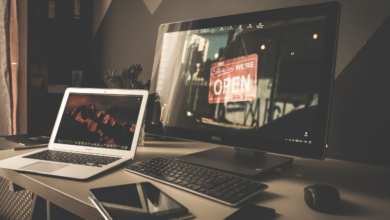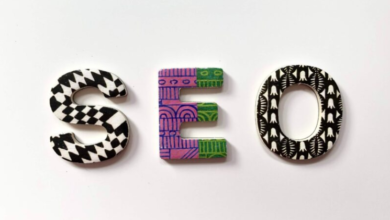What Potential Dangers Do AI‑Generated Influencer Accounts Pose to Real Creators on Social Media?

The rise of AI-generated influencer accounts has introduced a disruptive force into the world of social media. Once dominated by human creators who built audiences through personality, creativity, and connection, platforms are now seeing a wave of ultra-realistic digital influencers powered by artificial intelligence. Some are entirely fictional; others are based on real individuals but are enhanced or modified using tools like face swap video technology. While this shift may seem innovative or even entertaining at first, it carries serious implications for human creators trying to earn a living and maintain authenticity in the digital space.
AI influencers are quickly altering the way of gaining attention and affecting people. Because brands prefer investing in digital avatars that neither cost much nor need time for customization and that are far easier to manage than the real ones, the content creators are being threatened by a longer list of demands, such as lower visibility and revenues and more ethical dilemmas.
Erosion of Trust and Authenticity
One of the basic advantages of human influencers is the trust they develop with their followers during the course of time. Followers not only interact with the curated content but also with the truth, flaws, and natural evolution of real people. When AI accounts, for example, those that use face swap video content, go on to display human behavior, they do it so well that it becomes hard for some users to tell if it is real or synthetic.
The decrease in authenticity can affect the overall audience trust. If followers become unsure as to whether they interact with a real person or with an algorithm, they may pull out entirely. This results in a challenging situation for real creators as they have to prove their humanity in an environment that is full of artificial and often misleading personalities.
See also: What Are the Latest Technological Innovations in Mobility Scooters for 2025?
Unfair Competition in Brand Deals
AI influencers gain a lot of leverage over human creators when it comes to marketing activities. They don’t sleep out, they cause no scandals, and they are customizable to a brand’s requirements. Using face swap video tools, marketers can create campaigns with perfect visual consistency and brand alignment, often at a fraction of the cost of hiring a real influencer.
The field seems uneven. On the one hand, real creators have to handle contracts, suffer from variable audience interest, all the while taking care of their matters; on the other hand, AI influencers can publish premium content non-stop. When companies shift their focus to synthetic influencers, human content creators might be the ones to suffer, missing opportunities that were previously won through a personal touch and reach.
Deepfake Exploitation and Identity Theft
Another major drawback for the actual creators is the exploitation of their images with AI tools like face swap video technology. Unscrupulous actors are capable of using pictures or video material that are found in the public domain to create content that looks like a real person has done it. Besides, this might end up as misinformation, loss of reputation, or even financial fraud.
To illustrate, an evil AI-generated influencer could emulate an established creator to sell counterfeit goods, propagate harmful content, or politics. In many cases, the original person may not even be aware that their image has been used, and by the time the problem is discovered, the content may have spread rapidly.
Emotional and Creative Burnout
The eternal battle against algorithmically perfect AI influencers can become a mental and emotional drawback for real creators. Seeing as synthetic accounts get adopted much faster, receive more engagement, or pull in more attractive partnerships, can place pressure that may eventually lead to anxiety, burnout, and self-doubt. For human beings to produce the same kind of work done by machines now they have to rely on factors like real-world limitations, time, energy, mental health, and physical attributes.
Alongside, the artistic aspect of content creation is under threat as the invention of personality is moved along. AI-generated influencers not just replicate faces, they also replicate creativity, sense of humor, and emotional expression—often, in the process, they use face swap video content to reflect the likes of popular human creators. The seeming confusion is caused as to whether they are inspiration or imitation, or something in between, and many people are now at a loss as to where originality fits in a world where machines have the edge.
Legal and Ethical Uncertainty
The legal framework for dealing with AI-generated influencers is still evolving. Intellectual property laws, privacy rights, and advertising regulations often lag behind technological innovation. Real creators have limited legal recourse if their faces, voices, or styles are replicated using face swap video tools or other deepfake software. This legal gray area creates additional vulnerability and uncertainty for content creators who rely on their identity as a brand asset.
Without well-established measures and precise guidelines, the possibility of exploitation waxes. Creators might find themselves being replicated, substituted, or even altered by neuro-networks that have been trained with their material. The further this trouble is allowed to persist, the more convoluted it will be to draw the line between actual and artificial influence.
Summary
Thank you for helping us rewrite AI Influencer accounts, which are partially powered by video face swap technology. It is quite a helpful and interesting tool for brands, but it significantly cuts the income of real creators. The more the human and machine eras intertwine, the more complex content creators’ faces are in terms of popularity, profit, mental well-being, and personal identity. If the influencer ecosystem is to be fair, ethical, and creatively rich, it shall promptly adapt, for instance, through better regulations, platform transparency, and the introduction of authentic value-protecting tools in the milieu of AI’s ever-increasing shaping.




